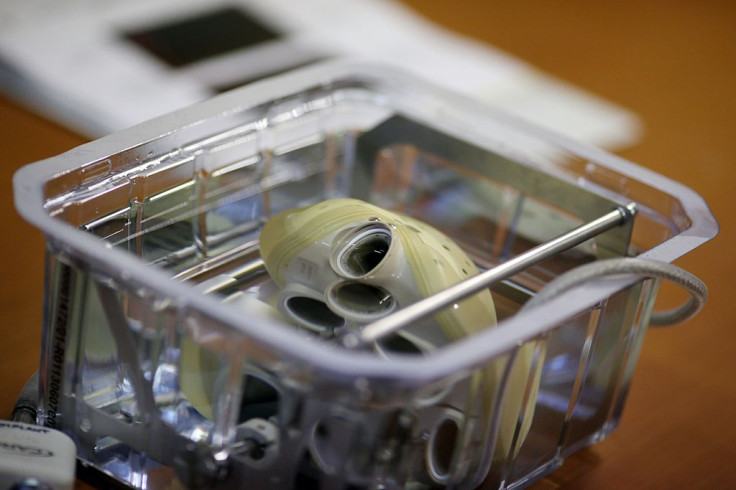Researchers 3D printed an artificial silicone heart and it works
The soft artificial heart looks like a real one but can only last for 45 minutes.

A team of researchers from ETH Zurich, led by doctoral student Nicholas Cohrs, has successfully created an artificial heart which looks and functions just like the real human heart. The soft monoblock has been created from silicone using a 3D-printing, lost-wax casting technique and could one day work as a replacement for its organic counterpart.
The artificial heart, which weighs 390 grams and has a volume of 679 cm<sup>2, mimics the natural heart closely. It has a right and a left ventricle, but instead of a septum in between, the ventricles are separated by an additional chamber. The chamber, inflated and deflated by pressurised air, replicates muscular contractions of the human heart and pumps fluid from the blood chambers.
The 3D printed heart promises a better future in the field of cardiology, but for now, it's far from a working model. Under appropriate testing conditions, Anastasios Petrou, a doctoral student of Product Development Group Zurich, noted that the soft artificial model could only last for about 3,000 beats, which would mean a lifetime of 30-45 minutes. After that, the material fails to withstand the strain of the fluid (comparable to human blood) and loses its structural integrity.
Cohrs said: "This was simply a feasibility test. Our goal was not to present a heart ready for implantation, but to think about a new direction for the development of artificial hearts".
They'll now look forward to enhancing the performance and tensile strength of the material so that could last longer, at least for about 3 billion beats – the standard for an 80-year-old person with an average of 80 BPM.
Developing the tensile strength of this material is indeed essential for the long run, but before that, these soft artificial hearts could also replace blood pumps hospitals use today for patients waiting for heart transplant. As reported by ETH Zurich, these pumps with metallic and plastic parts are "susceptible to complications while the patient lacks a physiological pulse".
© Copyright IBTimes 2025. All rights reserved.





















